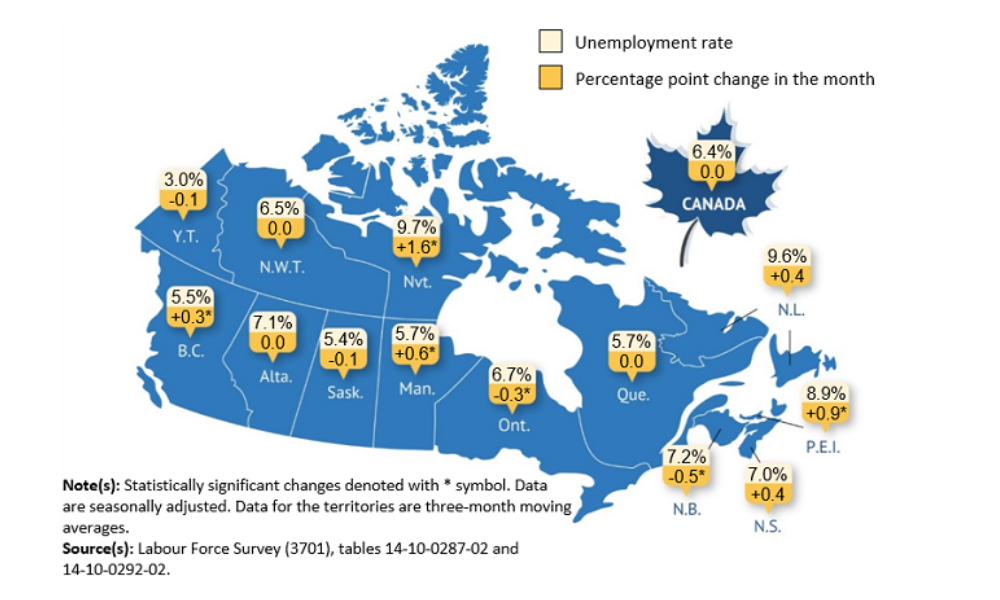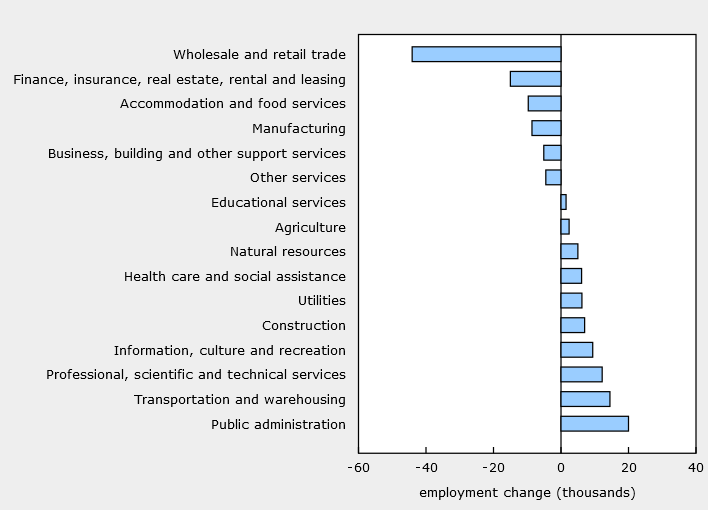Notable decline in private sector employment with loss of 42,000 jobs

Employment in Canada remained largely unchanged for the third consecutive month in July 2024, with a marginal decrease of 2,800 positions (-0.0%).
Despite this plateau, year-over-year data shows a positive trend, with a total increase of 346,000 jobs (+1.7%), says Statistics Canada in its Labour Force Survey.
July saw a notable decline in private sector employment, with a loss of 42,000 jobs (-0.3%), continuing the recent trend of little movement in this sector. Conversely, the public sector expanded significantly, adding 41,000 jobs (+0.9%), reflecting a robust annual growth of 4.8% (+205,000 jobs).
Overall, Canada lost 1,400 jobs in June following an increase of 27,000 in May.
This growth was largely driven by substantial increases in healthcare, social assistance, and public administration roles, which rose by 6.9%, 4.8%, and 3.3% respectively, says Ottawa.
Provincial data indicated mixed results, with Ontario and Saskatchewan seeing employment gains of 22,000 (+0.3%) and 6,700 (+1.1%) respectively. Conversely, Manitoba and Nova Scotia experienced job losses, with declines of 5,400 (-0.8%) and 4,800 (-0.9%).
Youth, older workers hit hard
Employment trends across different age groups revealed mixed outcomes. Young men aged 15 to 24 experienced a significant job loss of 20,000 positions (-1.5%), while women in the same age group saw their employment hold steady.

Employment also fell among older workers, particularly women aged 55 to 64, who saw a decline of 41,000 jobs (-2.6%), says Statistics Canada.
In contrast, core-aged men (25 to 54 years old) enjoyed a job increase of 48,000 positions (+0.7%), slightly offsetting the cumulative decline observed in May and June. However, year-over-year comparisons show a downward trend for both core-aged men and women, with employment rates dropping by 0.9 and 1.0 percentage points, respectively.
July proved challenging for returning students, whose employment rate plummeted to 51.3%, marking the lowest rate since July 1997, outside of the pandemic years, says Ottawa. The unemployment rate among returning students surged to 17.2%, the highest for July since 2009.
Recent immigrants also faced significant hurdles, with their unemployment rate rising 3.1 percentage points to 12.6% over the past year, with the most pronounced impact on recent immigrant youth, whose unemployment rate skyrocketed to 22.8%.
Comparing Canada and the US
The Canadian labour market continues to diverge from that of the United States, according to Statistics Canada. When adjusted to US concepts, Canada’s unemployment rate stood at 5.4% in July, 1.1 percentage points higher than the US rate of 4.3%.
Both countries saw a similar year-over-year increase in unemployment rates (+0.8 percentage points), yet Canada’s employment rate has fallen more sharply.
From July 2023 to July 2024, the employment rate (adjusted to US concepts) fell by 1.0 percentage points to 61.5% in Canada, while it declined by 0.4 percentage points to 60.0% in the United States.




